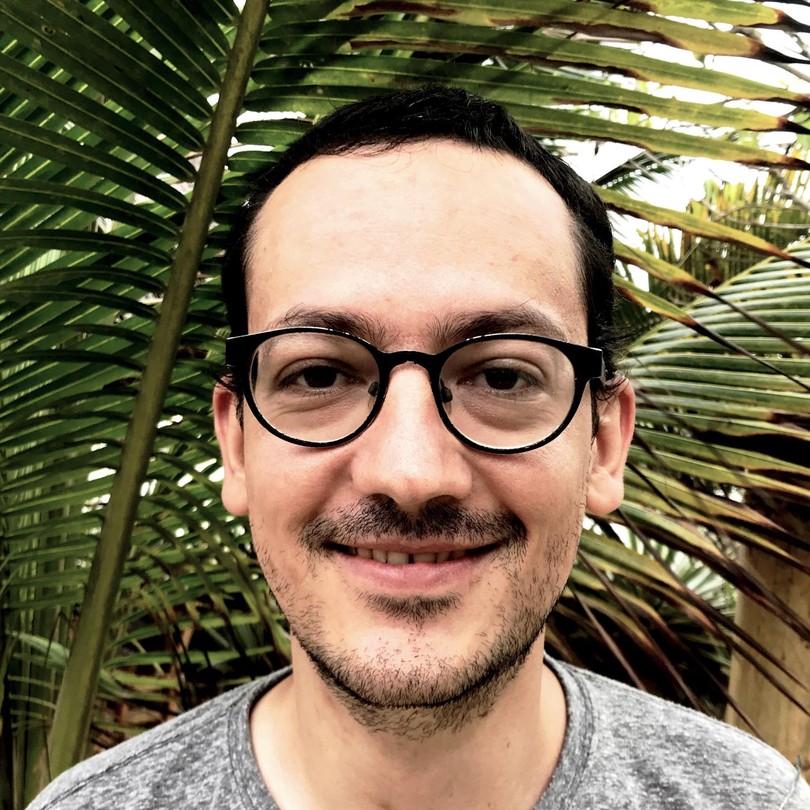EESS talk on "UN Environment Approach to Urban Metabolism in the Global South"

Event details
| Date | 18.09.2018 |
| Hour | 12:15 › 13:15 |
| Speaker |
Dr Esteban Munoz, Consultant to Cities Unit, Economy Division, United Nations Environmental Program Passionate scientist dedicated to the study of urban processes.He develops urban models for the representation of urban dynamics mainly in Python and R. He studied architecture and urban planning at the University of Applied Sciences Karlsruhe (HsKA; 2004-2008). He then worked for a year at the European Institute for Energy Research (EIFER) in Karlsruhe. In 2009, he did a Masters at the HafenCity University in Hamburg (HCU), the International Program: Resource Efficiency in Architecture and Planning (REAP); he jumped then to urban metabolism. He obtained his PhD in 2016 and while in his doctoral studies, he worked as a research fellow for the HafenCity University at the Technical Urban Infrastructure Systems Group. During these years he developed spatial microsimulation models for estimation and forecasting of resources flows of urban agglomerations. The aim of the research group is to deliver policy advice to the city of Hamburg in regard to future infrastructure investment. He also worked as a consultant for the International Financial Corporation (IFC) and is currently working as a consultant for UN Environment. |
| Location | |
| Category | Conferences - Seminars |
Abstract:
A significant share of all global direct anthropocentric environmental pressures can be attributed to cities. With their effects further increasing as urban populations continue to grow, conventional urban planning addressing climate change adaptation and mitigation is proving inadequate to achieve the well below 2 °C goal. Climate change mitigation & adaptation actions of cities need to be understood as a co-benefit to sustainable development. In this seminar I present UN Environment’s contribution to the discussion-- in form of a simulation model-- towards the accelerated transition of cities to a sustainable use of resources around the globe. I argue in favor of a bottom-up micro-level integrated modeling approach, able to capture behavioral changes. The Spatial Microsimulation Urban Metabolism (SMUM) model aims to quantify resource flows at a micro level with as little input-data as possible, while simultaneously having the computational mechanisms to accommodate cities with advanced data collection systems. Unlike other tools that model policy impacts on a city-wide level, SMUM can provide insights on individual groups within the population, broken down e. g. by income, education, household size or any other population strata. In this seminar I describe in detail the computational steps defined by the model as well as its pilot application to cities (Brussels, Sorsogon, Recife, Cape Town) and with different sector focus.
A significant share of all global direct anthropocentric environmental pressures can be attributed to cities. With their effects further increasing as urban populations continue to grow, conventional urban planning addressing climate change adaptation and mitigation is proving inadequate to achieve the well below 2 °C goal. Climate change mitigation & adaptation actions of cities need to be understood as a co-benefit to sustainable development. In this seminar I present UN Environment’s contribution to the discussion-- in form of a simulation model-- towards the accelerated transition of cities to a sustainable use of resources around the globe. I argue in favor of a bottom-up micro-level integrated modeling approach, able to capture behavioral changes. The Spatial Microsimulation Urban Metabolism (SMUM) model aims to quantify resource flows at a micro level with as little input-data as possible, while simultaneously having the computational mechanisms to accommodate cities with advanced data collection systems. Unlike other tools that model policy impacts on a city-wide level, SMUM can provide insights on individual groups within the population, broken down e. g. by income, education, household size or any other population strata. In this seminar I describe in detail the computational steps defined by the model as well as its pilot application to cities (Brussels, Sorsogon, Recife, Cape Town) and with different sector focus.
Practical information
- General public
- Free
- This event is internal
Organizer
- EESS - IIE
Contact
- Prof. Claudia Binder & Mr Joao Meirelles de Miranda, HERUS